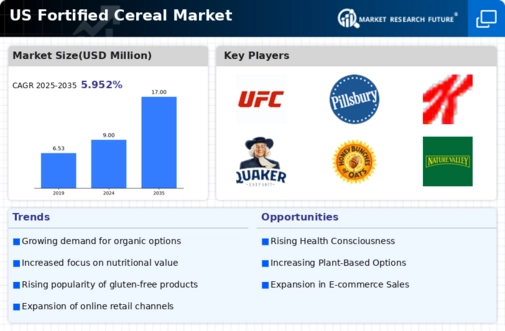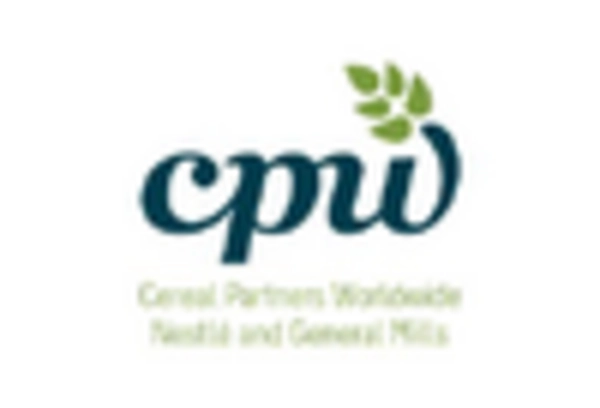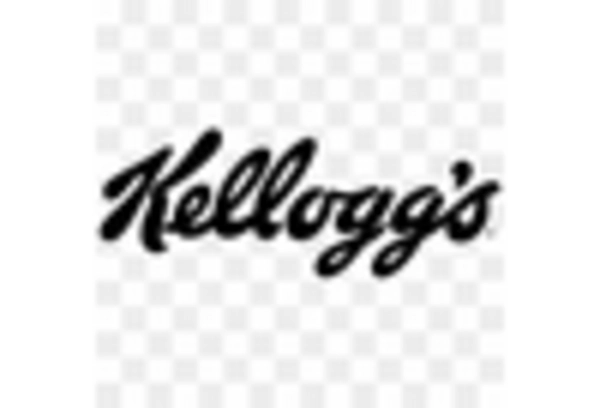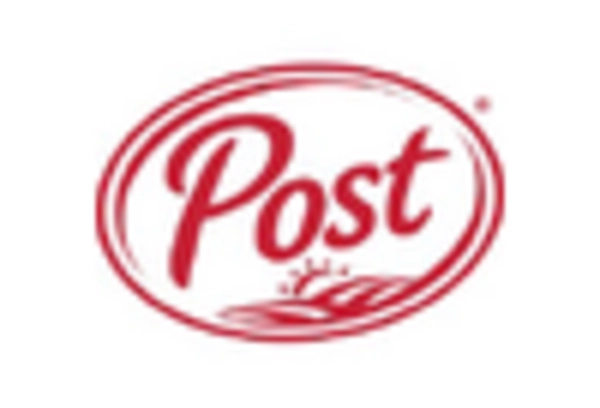The fortified cereal market exhibits a dynamic competitive landscape characterized by innovation, strategic partnerships, and a focus on health-conscious consumer trends. Major players such as Kellogg's (US), General Mills (US), and Nestle (CH) are actively shaping the market through various strategic initiatives. Kellogg's (US) emphasizes product innovation, particularly in developing cereals that cater to specific dietary needs, while General Mills (US) focuses on expanding its organic and natural product lines. Nestle (CH), on the other hand, is leveraging its global presence to enhance distribution channels and introduce fortified cereals that align with emerging health trends. Collectively, these strategies contribute to a competitive environment that prioritizes consumer health and wellness, thereby driving market growth.
Key business tactics within the fortified cereal market include localizing manufacturing and optimizing supply chains to enhance efficiency and responsiveness to consumer demands. The market structure appears moderately fragmented, with several key players holding substantial market shares. This fragmentation allows for a diverse range of products, catering to various consumer preferences, while the collective influence of these major companies helps to stabilize pricing and maintain quality standards across the sector.
In October 2025, Kellogg's (US) announced a partnership with a leading health technology firm to develop a personalized nutrition platform that integrates consumer data to tailor cereal offerings. This strategic move is likely to enhance Kellogg's (US) competitive edge by providing consumers with customized nutrition solutions, thereby aligning with the growing trend of personalized health and wellness.
In September 2025, General Mills (US) launched a new line of gluten-free fortified cereals aimed at expanding its market share among health-conscious consumers. This initiative not only reflects the company's commitment to inclusivity in dietary options but also positions General Mills (US) as a leader in the gluten-free segment, potentially attracting a broader customer base.
In August 2025, Nestle (CH) unveiled a sustainability initiative focused on reducing packaging waste for its fortified cereal products. This initiative is indicative of a broader industry trend towards sustainability, as consumers increasingly favor brands that demonstrate environmental responsibility. By prioritizing sustainable practices, Nestle (CH) may enhance its brand loyalty and appeal to eco-conscious consumers.
As of November 2025, current competitive trends in the fortified cereal market are heavily influenced by digitalization, sustainability, and the integration of artificial intelligence in product development and marketing strategies. Strategic alliances are becoming increasingly important, as companies seek to leverage complementary strengths to enhance their market positions. Looking ahead, competitive differentiation is likely to evolve from traditional price-based competition to a focus on innovation, technological advancements, and supply chain reliability, reflecting the changing preferences of consumers who prioritize health, sustainability, and personalized experiences.

















Leave a Comment